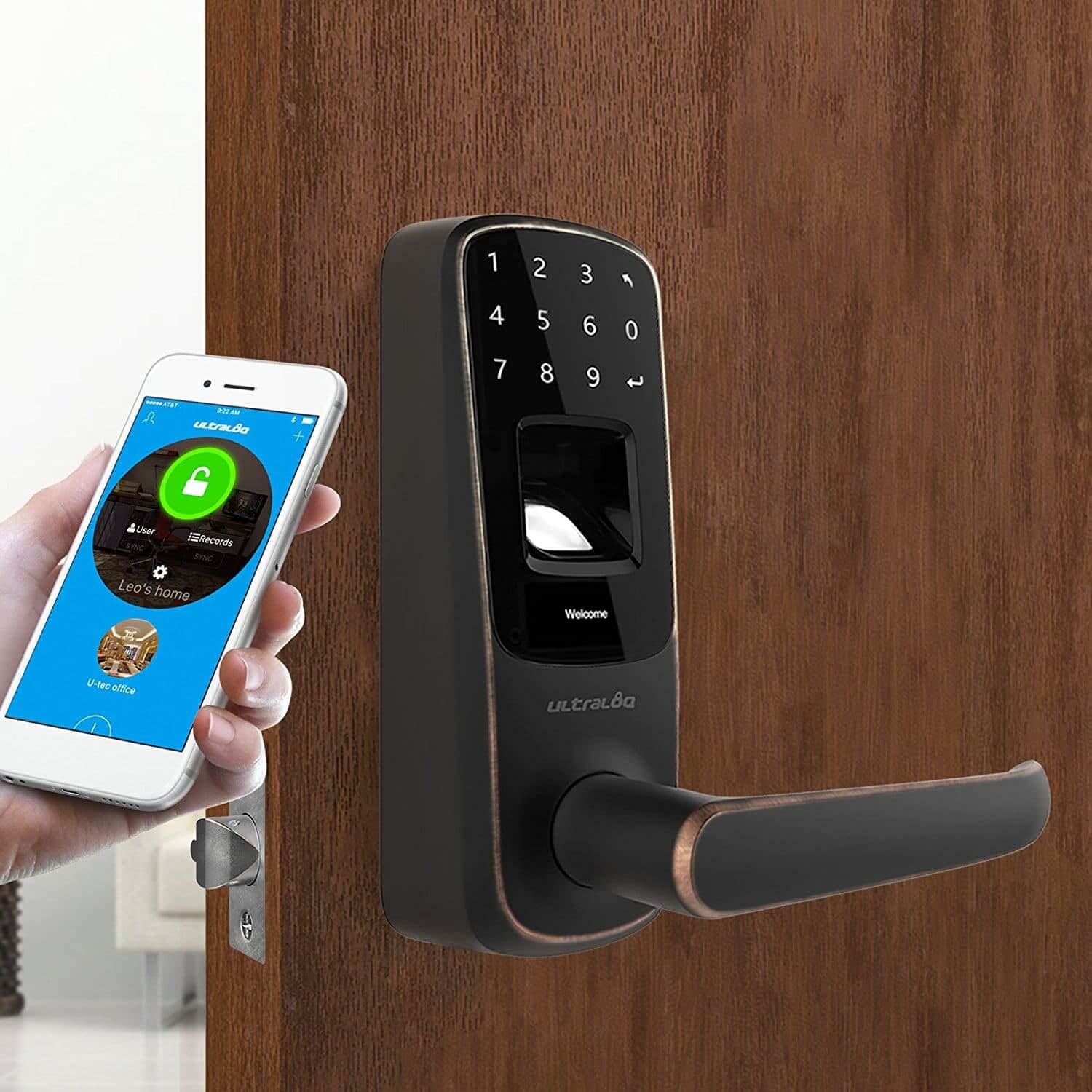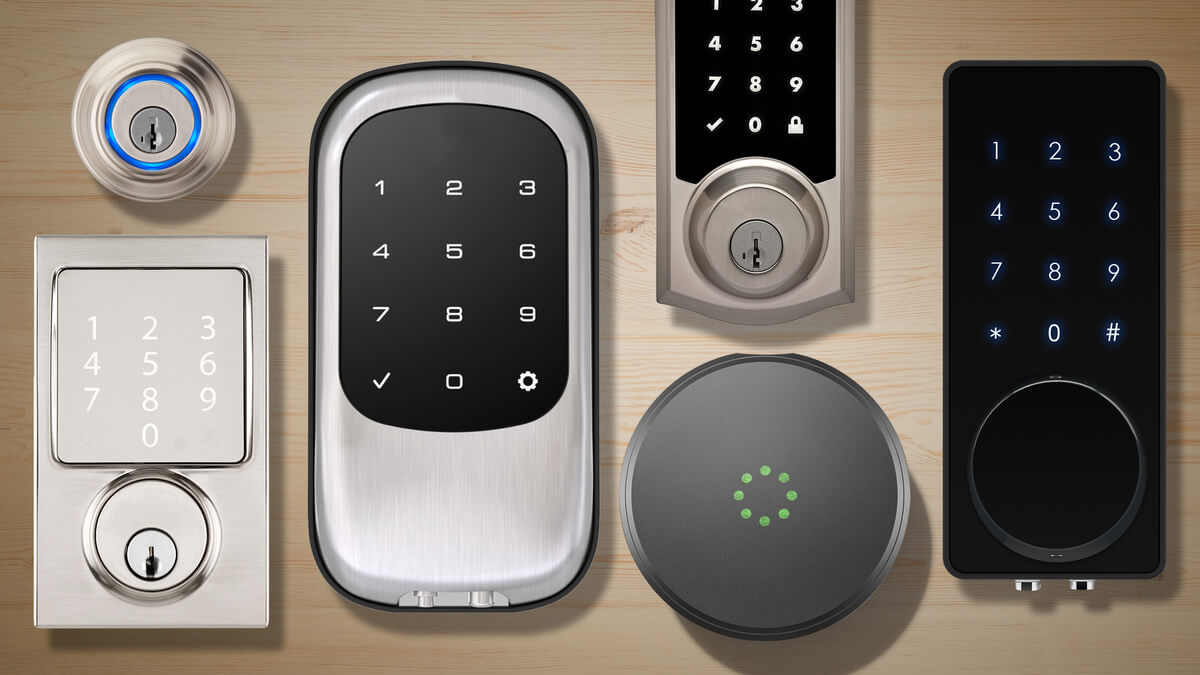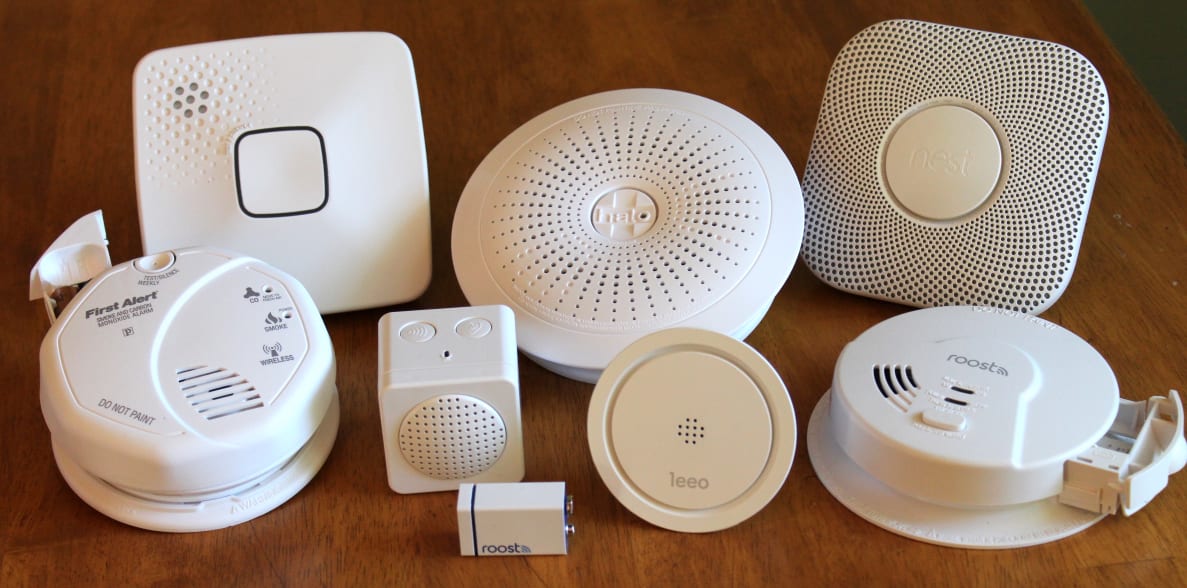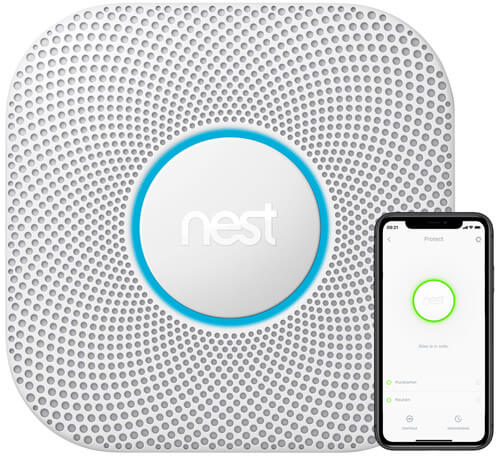
Top 10 home automation ideas
Ultimate smart home tour
It can be hard to know where to start with Smart Home improvements, so I thought I’d do a tour of my Smart Home and walk you through my top 10 home automations. These are the things I value the most to help with security, convenience, saving energy … and even some money over time. I’m Matt Ferrell … welcome to Undecided. Smart homes are a lot more than gimmicks and needing your smart phone to turn a light on. They really can give you peace of mind and save you energy and money over time. But the amount of things you can do can be overwhelming, so I wanted to share some of my favorite home automations, and products that I’m currently using, to spark some ideas and inspirations for you.
My main rule is that everything should have a purpose and address an issue you’re having day-to-day. A very close second is that what you do should be additive to how you use your home today … nothing should become more difficult to do. Here are the top 10 home automations from my smart home right now (these aren’t in a ranked order). Be sure to stay through the end for an extra tip if you’re just getting started with this. Starting off on the outside of my house would be the lights. I live on a street with minimal street lights, so at sunset every day I have an automation that turns on our front porch light and light post.
And they’ll automatically turn themselves off around bedtime for us. We normally don’t leave our light in the backyard on for longer than 10-15 minutes, we tend to not hang out there at night, so I have a routine that automatically turns off that light after it’s been on for 30 minutes. Plenty of time to take the dog outside at night and get back in. You could also add a motion sensor and have it automatically turn itself on or off if motion’s detected, but our main concern is the smart home system taking care of things in case we forget. Working my way towards getting into the house would be the garage door.
To get this functionality doesn’t mean that you have to replace your whole garage door opener. There are some affordable systems that you can buy to retrofit your opener, like the Chamberlain MyQ. In my case I’m using a little controller from Garageio. The door button in the garage works as normal, but I can also open and close the door remotely through the Garageio app or through Hubitat with some help from IFTTT. When our house flips into away or night mode, the garage door will make sure it’s closed. It’s a set it and forget it automation, and adds some peace of mind that you didn’t forget to close the garage door when you left for work. Covering the other ways into the house would be the outside doors.
There’s no shortage of smart locks on the market, so you can find something in pretty much every price range. I’ve been using an August smart lock for several years now and have been happy with the performance, but wanted something a little more flexible. I don’t always have my phone or key on me. Just recently I upgraded our front and back doors to Yale Assure touch screen smart locks. A couple of quick perks are the built in touch screen for keyless entry with or without a smartphone, and the flexibility of the integrations in kind of amazing.
Even though August can integrate into Google, Amazon, and Apple, it’s a proprietary system and has some limitations. Yale did something very clever: you can purchase different wireless modules to make their locks work with pretty much any system out there. In my case I got Zigbee modules so they can hook into my Hubitat system, but you can get Wifi, Z-wave, and even an August module. That flexibility along with the looks and features won me over. Combine a smart lock with a door sensor and you can know if the door is open or not.

From that you can set up some pretty powerful automations. Ever had those moments where you wonder if you locked the backdoor after you’re arrived at work? Well, with a smart lock you can not only lock it remotely, but you can set up an automation to do it automatically for you without having to even think about it. If both my wife and I are gone and the house is empty, the house automatically flips into away mode, which makes sure all of the doors are locked.
The same thing happens when the house goes into night mode around bedtime. But I also have an automation that checks if the door is locked five minutes after the door has closed. That covers those times that someone runs out to put something in the recycling bin and forgets to lock the door again when they come back in … [clears throat] … not that my wife has ever done that … or me. And directly related to that are my home automations around security and intrusion detection. I have door and window contact sensors around the house, so we know exactly when and which doors have been opened.
Most smart home platforms have some kind of home security functionality you can take advantage of. For me I’m using Hubitat’s Safety Monitor rules, which arm and disarm the house based on what I’ve set. Like having the system blast out a warning on the smart speakers in the house if the outside doors are opened when the house is in away mode, as well as sending notifications to my wife and I. Ecobee’s new Haven subscription service is also something I’ve been recently trying out. If we’re away from home, the Ecobee system will automatically start recording video from the Ecobee Camera if there’s motion detected in the house, or if one of the door or window sensors has been opened.
I’m still testing out the system, but the image quality from the camera is really nice, includes night vision, and can integrate into Apple Homekit. And just like the thermostat, it has built in Alexa if that’s something you’re interested in. The speaker on the camera is really loud if you want to talk to someone or have the alarm sound if intrusion is detected.
What makes security systems like Ecobee Haven interesting is the lack of a keypad for arming and disarming. The system knows when you’re not there and takes care of it for you. Now that we’re squarely inside my house now, it’s a good idea to look at controlling the temperature. If you saw my Ecobee thermostat review, you’ll know I’m a big fan of smart thermostats. They’re a little pricey compared to some of the other smart home gear I’ve mentioned, but they can make a dent in the costs of heating and cooling your home. And they really are a set it and forget it kind of thing. Ecobee actually sent me their newest model to test out with some of their other new gear, and I have to say that the latest version is snappier than the third generation I was using. Basic functionality is the same, but it’s a faster and in a more streamlined package. It also has built in Alexa support if that’s your voice assistant of choice.
I have automations and geofencing set up with my system, so it automatically dials back the heating and cooling when my wife and I leave home. In the past I’ve had this hooked into Hubitat to help control and synchronize that with Ecobee, but I’ve been testing out Ecobee’s new Eco+ and Ecobee Haven products by letting the system manage this on it’s own. With the Eco+ system you tell Ecobee what level of savings versus comfort you’re happy with and it finds ways to streamline your energy use and HVAC system.

It even ties into your electric company and time-of-use rates. Ecobee takes advantage of all of the temperature and motion sensors you have in your house, which includes their new door and window sensors. Combine that with geofencing on your phones and it’s pretty accurate at knowing when you’re home or away. Smart thermostats like this can really make a difference. Building off of the that, it’s also a good idea to control humidity level in some areas.
Add a few temperature and humidity sensors around your house and combine that with some smart outlets and dehumidifiers, and you can take better control around maintaining the humidity levels in damp places around your house. My garage, which is a part of the basement level of our house, can get pretty damp and humid. I have a smart outlet controlling this dehumidifier. Hubitat is looking at both the garage temperature and humidity level to determine when to turn it on and off.
If it’s too cold, the dehumidifier is kept off. If it’s above freezing and the humidity level reaches a trigger I’ve set, the system kicks on. It’s more accurate than the built in monitoring on the dehumidifier. Related to that I also have a humidity sensor in my bathroom, which I’m using to monitor and control the bathroom fan. After a shower, if the bathroom gets back down to a certain humidity level, it will turn itself off. Continuing down that path, I have automations and warnings set up for water leaks. I’m using a couple of Smartthings water sensors hooked up to my Hubitat system and the Safety Monitor rules. If there’s water detected around my air conditioning pump or water heater, it will play a warning on the smart speakers around the house and send a notification to our phones.
I set this up after we had a water heater die and leak in our basement, and it came in handy almost immediately. Our replacement water heater was faulty and started leaking within the first 24 hours and the system caught it. Well worth setting something like this up. But what about kicking back and relaxing or sitting down to do some work. We have home automations around pretty much every single light inside the house too. I have a mix of Philips Hue lights and Lutron Caseta switches around the house. The most affordable way to add some smarts to your lights is with smart switches, since you can control multiple lights with one switch …

Like in my kitchen. Four ceiling lights running off of one switch is cheaper than replacing each light with a smart bulb. Some of the routines I have are linked up to my Logitech Harmony remote control.
When we turn on the TV after sunset, the lights in the room automatically dim to a more comfortable level for watching TV. Turn off the system to go to bed at night and everything, including the lights, turns off. And a push of a button on the remote control can turn living room lights on and off, or even turn off the front porch light if it’s distracting while watching TV. In my office I have some routines set up for when I’m recording a video like this versus when I’m sitting at the desk working. I can just call out to my homepods to “start working” or “start recording.”
I wonder if there’s an automation I could create for this? I always use a VPN when traveling and using free Wifi in airports and hotels, but that’s not the only reason to use one.

Instant Pot Lux 6-in-1 Electric Pressure Cooker, Sterilizer Slow Cooker, Rice Cooker, Steamer, Saute, and Warmer, 6…

Hammermill Printer Paper, 20 lb Copy Paper, 8.5 x 11 – 8 Ream (4,000 Sheets) – 92 Bright, Made in the USA

Samsung Galaxy Watch Active 2 (40mm, GPS, Bluetooth) Smart Watch with Advanced Health monitoring, Fitness Tracking , and…
So you forget to check in on your laundry in a timely fashion. Ever smell wet laundry that’s sat in the washing machine for too long? I set up some automations to give my wife and I a heads up when the washing machine or dryer has finished. For my washing machine I hooked it up [Zooz Z-wave smart outlet].
There are lots of options out there depending on what system you’re integrating with, but outlets like this can monitor energy usage. In Hubitat I have an automation setup to detect when the energy use starts and stops. When the washer has stopped, and the energy use drops, it calls out on the smart speakers around the house that the laundry has finished. And in my dryer I’m using this little white box called SmartDry. It attaches to the drum of the dryer with magnets and can detect motion, temperature, and humidity.
You set it up with your phone and tell it how dry you like your clothes. Anytime you run the dryer it automatically kicks on when it detects the drum spinning.
And it lets you know when you clothes have reached the dryness level you’ve set in the app. It’s a lot more accurate than my dryer is at the same task. I’ve found that we can sometimes stop the dryer 10 – 15 minutes early compared to what the dryer thinks needs to be done. When you consider that washers and dryers account for about 13% of our energy use, this can save you a lot of money over time … and help keep your clothes from getting wrinkled. It’s not perfect though. The notifications only work through the phone app and it’s limited to one device at the moment. It’s a small team that makes SmartDry and they have plans to add more functionality and integrations, but just know that it’s a little limited right now. Now, this is one I haven’t taken advantage of in a while because of …
Well … everyone being stuck at home right now, but also because I’ve been working from home for the past couple of years. But I do have actions set up with my iRobot Roomba vacuum and IFTTT to automatically start a cleaning job when the house is empty. When both my wife and I worked away from home, this was a great add-on to an already great product. Now, my final tip is around smart home gear in general. If you’re just starting out with this, pick a system to get your self started and focus on gear that supports it.
So it doesn’t matter if you’re going with Apple Homekit, Alexa, Google, or a self-hosted option like Hubitat. The thing I learned quickly was that smart home gear is a bit of the Wild West … even in 2020. Try to pick gear that can support multiple systems to give you flexibility over time. It’ll work great out of the box, but also be able to grow with you … like the Yale smart locks I mentioned before. Setting up a smart home can be fun and rewarding, but also incredibly aggravating when things just “don’t work.” The smart home user experience still has some challenges around it.
But if you figure out what rough edges you’d like to smooth out in your daily routines and buy specific gear to address that issue, you should be able to enjoy the benefits of a smart home without driving yourself crazy. Now jump into the comments and let me know what your top automations are. And as always a special thank you to all of my Patrons. If you liked this video be sure to check out one of the ones I have linked right here. Be sure to subscribe if you think I’ve earned it.








